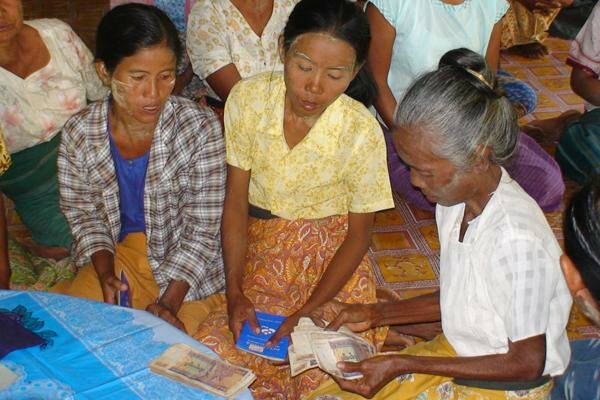Microcredit Goes Macro
Myanmar government says open to more microcredit, but experts warn that sector lacks modern rules and regulations.

Myanmar President Thein Sein’s statement in May that a sustainable microfinance system should be established has sparked interest among aid workers and those already involved in the country’s embryonic microfinance system.
The president made the announcement at a rural development and poverty alleviation workshop where he acknowledged the country’s poor are concentrated outside the cities and in need of assistance.
“We expect [from the president’s statement] that we would be able to work more broadly in the future,” said Maung Maung, general manager of international NGO Pact which recently hosted Myanmar’s largest microfinance project. As of March, Pact had 478,404 clients in 22 townships from three zones – Delta, Dry and Shan.
More than 85% of rural households in Myanmar rely on loans from multiple sources to meet basic needs, according to the UN Development Programme (UNDP), which brought microcredit lending to the country in 1997.
“The need for credit in the rural economy is substantial,” Akbar Usmani, acting UNDP resident representative, told IRIN. He estimated the present demand for loans in rural Myanmar at around US$340-471 million per year.
Current microfinance activities in Myanmar are conducted on the basis of specific authorisations provided to microfinance actors. These take the form of a set of Memoranda of Understanding (MoUs) signed by the various microfinance actors with their line-ministry.
Microfinance is, therefore, not yet mainstreamed into a regulated financial sector, but is rather authorised on a case-by-case basis by the government. There is no specific microfinance regulation in Myanmar, according to a 2010 microfinance industry report published by France-based NGO ACTED and the Banking with the Poor Network in collaboration with the Foundation for Development Cooperation.
Both Maung Maung and the UNDP’s Usmani agreed that a strengthened legal framework could fortify and sustain microfinance lending in this agriculture-based country, where 70% of the population live in rural areas and about 26% below the poverty line, according to UNDP’s country-wide survey conducted in 2009 to 2010.
Guessing game
Still, no one knows what form the rules and regulations will take, and agencies are wondering how the government will amend current restrictions on lending from financial institutions. A law passed in 1990 forbade both state and privately owned banks from providing uncollateralized credit.
This means all bank credit has to be backed by either real estate or by a fixed deposit account, which always worries agencies that rely on donor funds to run their projects.
“How can we borrow money from the [local] banks, when we have nothing to collateralize?” said Nyunt Hlaing, executive committee member of Myanmar Business Executives Association, which is one of the local groups engaging in the microfinance sector. “This is a big challenge in expanding and sustaining the projects for the long run.”
In the absence of access to institutional credit from the private and public banks, the rural poor rely on relatives, friends, moneylenders and pawn shops for small loans which charge interest rates as high as 60-200% a year.
UNDP introduced microfinance to Myanmar in 1997 using the Grameen model of group-based lending in which typically a small group takes on the responsibility of repaying the debt. The initiative was originally implemented through several sub-organisations, but in 2006, Pact took over all of UNDP's microfinance programmes.
Several other government-sponsored groups, semi-governmental organizations and local and international NGOs have microfinance projects, thanks to individual MoUs with the government.
There are institutional microfinancing lenders in 46 of the country's 330 townships, and according to UNDP, only 10% of Myanmar’s demand has been met.
Experts and economists believe that poverty could be effectively reduced if modern rules and regulations are implemented for the microfinancing sector.
This article was first published in IRIN.

















